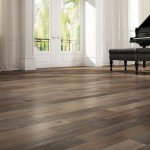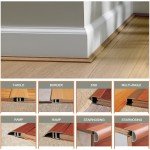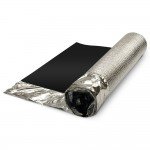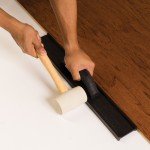
When
installing laminate flooring during the summer, it is important to account for
both expansion and contraction, although contraction may be a more significant
factor in certain cases. Laminate flooring is typically composed of layers of
wood-based materials and has the tendency to expand and contract with changes
in temperature and humidity.
During the
summer, when humidity levels are often higher, laminate flooring may absorb
moisture and expand. However, it is important to note that laminate flooring is
designed with expansion gaps to accommodate such changes. These gaps allow the
flooring to expand without causing buckling or warping.
Contraction,
on the other hand, may occur if the air conditioning or dehumidifiers are used
frequently, leading to lower humidity levels. In such cases, the flooring may
lose moisture and shrink slightly.
To ensure a
successful installation, it is crucial to follow the manufacturer's guidelines
and recommendations regarding expansion and contraction. These guidelines often
include leaving sufficient expansion gaps around the perimeter of the room and
other fixed objects, such as columns or doorways. The specific recommended gap
size may vary depending on the manufacturer and the specific product.
It is
essential to acclimate the laminate flooring to the room's conditions before installation.
This involves storing the flooring in the room for a specified period, allowing
it to adjust to the temperature and humidity levels. Acclimation helps minimize
the potential for expansion or contraction after installation.
Additionally,
maintaining consistent humidity levels within the recommended range throughout
the year can help minimize the effects of expansion and contraction on laminate
flooring. Using humidifiers or dehumidifiers when necessary can help regulate
the moisture levels in the room and reduce the likelihood of significant
changes in the flooring.
In summary,
when installing laminate flooring during the summer, it is necessary to account
for both expansion and contraction. While expansion may be more prominent in
high humidity conditions, contraction can occur in environments with low
humidity levels. By following the manufacturer's guidelines, leaving proper
expansion gaps, and maintaining consistent humidity levels, you can ensure a
successful and long-lasting laminate flooring installation.
Furthermore,
it's important to consider the specific climate and conditions of the
installation location. Different regions may experience varying levels of
humidity and temperature fluctuations during the summer season. For example,
areas with high humidity or coastal regions may have greater moisture content
in the air, which can contribute to more significant expansion of the laminate
flooring.
In cases
where the summer climate is particularly humid, you may need to account for a
potentially higher degree of expansion. This means leaving slightly larger
expansion gaps or using expansion spacers recommended by the manufacturer.
Adequate spacing allows the laminate flooring to expand without putting
excessive pressure on the edges, which could lead to buckling or damage over
time.
Additionally,
it's worth noting that laminate flooring with moisture-resistant or waterproof
properties may exhibit reduced expansion and contraction compared to standard
laminate flooring. These types of laminate are specifically designed to handle
moisture better, making them more suitable for environments with higher
humidity levels or areas prone to moisture exposure, such as bathrooms or
kitchens.
It's always
recommended to consult the installation instructions provided by the laminate
flooring manufacturer. They will offer specific guidelines and recommendations
tailored to their product, taking into account the expected expansion and
contraction characteristics.
Lastly, if
you have any concerns or are unsure about the installation process, it's
advisable to seek professional assistance from experienced flooring installers.
They can assess the specific conditions of your space, consider the potential
expansion and contraction factors, and ensure the proper installation
techniques are employed.
By carefully
accounting for both expansion and contraction and following the manufacturer's
instructions, you can install laminate flooring during the summer in a way that
minimizes the risk of issues arising from temperature and humidity
fluctuations.









